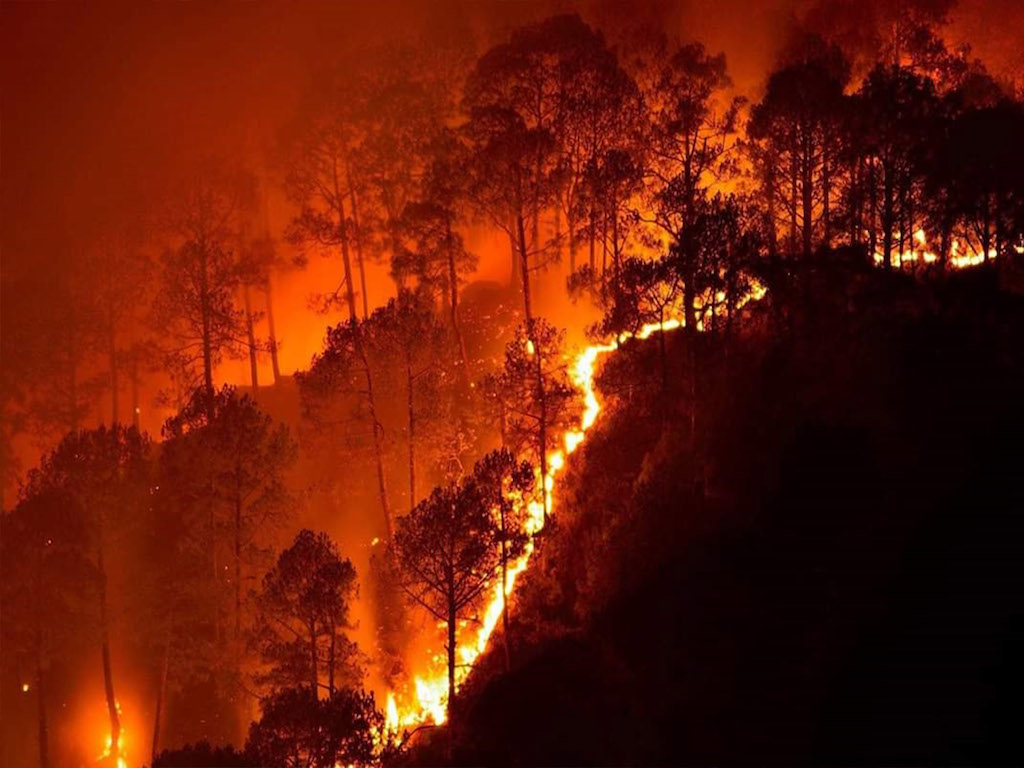4 Mins Read
Ever since the hashtag #prayforamazonia became a global Twitter trend this week, there has been a renewed interest in and awareness of the deforestation of the Amazon in relation to climate change. Commentators from all over are suddenly waxing poetic about the devastating loss of the planet’s lungs and criticising Brazil’s new far-right President, Jair Bolsanaro for his failure to protect the environment and for encouraging forest-burning practices among farmers. While the Twitterverse is ablaze (!) with indignation and upset about our failure to save the Amazon rainforest, other areas of the world that are also severely aflame have been completely ignored, including right here in Asia.
From Indonesia to Korea, Siberia and the United States, the entire planet is actually on fire. What this calls for is more than a reshare, repost or retweet on social media platforms – governments need to be taking real action now, prodded by us, the planet’s citizens.
Brazil’s space research centre, the National Institute for Space Research (INPE), recently revealed that the Amazon rainforest is burning at a faster rate than ever before. Detecting over 73,000 fires this year on Earth’s largest rainforest, their figures indicated a 77% increase in the number of fires compared to the same period last year. These fires have mostly been set by farmers, who many say have been emboldened by Bolsonaro’s lax environmental policies regulating illegal practices. Doing more than just clearing uninhabited forests, these fires have now begun creeping up in populated areas in the Northern states of Rondônia and Acre and wafted smoke all the way down to São Paulo, according to the World Meteorological Organisation (WMO).
Though classified as a “natural disaster” that sparks during dry weather and droughts by the Environmental Protection Agency (EPA), 85-90% of wildfires occur due to human activities such as forest clearing and inefficient agriculture, according to National Geographic. What we are seeing today with wildfires of this scale is a result of mismanaged, illegal forest clearing. Rightfully, the destruction of the Amazon rainforest has sounded alarm bells because its function in absorbing carbon dioxide makes it one of the planet’s most crucial natural resources to slow down global warming. But such a massive loss of forest is not just occurring in the Amazon – this is a global problem that will have global consequences.
Protecting the Amazon has long been touted as one of the most effective tools to mitigate climate change, but forest ecosystems around the world also contribute to the absorption of millions of tonnes of carbon emissions, are home to 80% of the earth’s land-based species, and are in need of the same protection. According to the World Wildlife Fund (WWF), we are globally losing 18.7 million acres of forests every single year – this is equivalent to 27 football fields per minute.
Ecologist and professor Thomas Lovejoy previously told the WWF: “Any forest destroyed is a threat to biodiversity and the people who use that biodiversity. The overwhelming threat is that a lot of carbon goes into the atmosphere.”
In Indonesia, the number of forest and land fires has almost doubled within the first week of August, according to the country’s Meteorology, Climatology and Geophysics Agency (BMKG). As the Indonesian authorities battle the fires in an attempt to prevent a repeat of events in 2015, the Malaysian government has already sparked warnings of haze affecting the country’s west coast, Sarawak region. These rampant forest fires, which occur every year during Southeast Asia’s dry season but are especially threatening this year, is also unleashing toxic smog over Singapore, Kuala Lumpur and various other cities in the region.
Wildfires have also engulfed Siberia and its neighbouring regions for months, with the total area raging in flames equalling the size of Belgium. Environmental activists in Russia have labelled this year’s wildfires unprecedented – with the sheer distance of the flames involved being the worst in the history of wildfires. The fires are so severe that Putin has recently mobilised Russia’s military planes to battle the shrouds of smoke covering industrial cities and remote Arctic areas. Authorities have also declared a state of emergency in all of Krasnoyarsk and Irkutsk – an area stretching from Mongolia to the Arctic Ocean. As the scramble to end the fires continue, NASA has detected satellite images of smoke reaching as far as the United States and Canada.
Let’s use this social media storm about deforestation in the Amazon to restart and reenergize the conversation about global climate change. As individuals, the “single biggest way” to reduce our carbon impact and fight climate change is to reduce meat and dairy consumption. Businesses also need to drive change by adopting climate neutral or even carbon positive policies – and we, as consumers, have to pressure corporations to act on it. Governments must step up: as the IPCC’s recent landmark report has made it clear, there needs to be intergovernmental action to stop irreversible loss in land ecosystem, promote the regeneration of soils and forests, and cut intensive livestock farming practices.
The planet has never been under such threat. Our conversations have to go beyond “praying for Amazonia”, and our actions need to start matching the urgent calls we share online.
Lead image courtesy of Wikimedia Commons.




